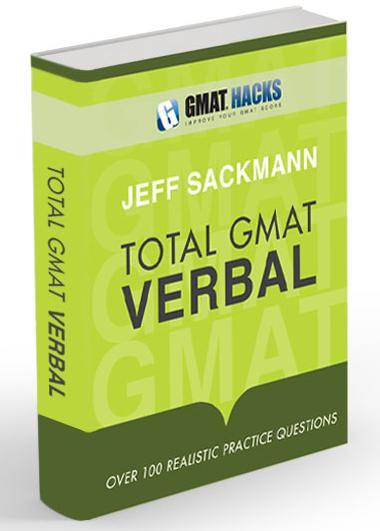
Bookshelf
|
|
Total GMAT Math Jeff's complete Quant guide, on sale now! |
|
|
Total GMAT Verbal Everything you need to ace GMAT Verbal! |
1,800 Practice Math Questions
Buy Jeff's books at Amazon.com

GMAT Official Guide, with IR
OG Math | OG Verbal
OG12 & Quant Rev solutions!
GMAT Question of the Day
Beginner's Guide to the GMAT
GMAT Hacks Affiliate Program

Recent Hacks

Categories
- General Study Tips
- Goals and Planning
- CAT Strategy
- The Mental Game
- GMAT Math Strategy
- GMAT Math Topics
- Mental Math
- Data Sufficiency
- Critical Reasoning
- Reading Comprehension
- Sentence Correction
- Analytical Writing Assessment
- Integrated Reasoning
- IR Explained
- Business School Admissions
- GMAT Prep Resources
- Practice Questions
- Total GMAT Math
- Total GMAT Verbal
- GMAT 111

Spaced Repetition
| You should follow me on Twitter. While you're at it, take a moment to subscribe to GMAT Hacks via RSS or Email. |
If you're going to learn something new--that is, really learn it so you won't forget it, even under the pressure of a standardized test such as the GMAT--you need to be exposed to it many times. How many? How frequently?
It turns out that a lot of research has been done to answer those questions. The general technique of learning this way is called "spaced repetition," though it goes by some other names, as well. If you've used SuperMemo or a Pimsleur program to learn a language, you've experienced spaced repetition.
What does this have to do with the GMAT? The most obvious application is with flashcards. If you're learning a new fact (a formula, an idiom, whatever), you probably won't read it once and remember it forever.
What's interesting to me is the spacing that Paul Pimsleur uses in his language programs:
5 seconds, 25 seconds, 2 minutes, 10 minutes, 1 hour, 5 hours, 1 day, 5 days, 25 days, 4 months, 2 years
In other words, if you learn a new fact and want to remember it, you should remind yourself 5 seconds later, 25 seconds later, 2 minutes later, and so on.
If you're like most of the students I've ever worked with, this is way more frequently than you usually repeat things!
Initial Repetition
The lesson here is obvious. If you come across something totally unfamiliar, don't trust yourself to remember it. Read it, try a practice problem, see if you can repeat it aloud with the book closed ... and then repeat the whole process.
As I so often emphasize on this site, quality is more important than quantity. If this approach means that you aren't exposed to as many new topics in one study session, that's ok. I'd much rather you learn 10 things and remember them than "learn" 25 things and forget nearly all of them.
Later Repetition
In that list of times above, note that it doesn't end after the length of one study session. It's great if you can tell a friend the next day what you learned, but the GMAT might still be two months away.
This is an easy problem to solve, and you may be handling it already. The core of any GMAT study regimen is practice problems, such as those in The Official Guide and my own problem sets.
If you do fifty randomly-chosen GMAT Quantitative problems, you'll see nearly every topic on the exam. That's all the repetition you'll need for most of what you've learned. Same goes for Verbal question types such as Sentence Correction.
This is yet another reason to keep to a regular study regimen. Practice every day, or as close as you can. Once you've learned the basics, don't ignore any topic or question type for too long. In the final weeks leading up to your test, a good way to do this is to practice Quant and Verbal on alternate days.
Tools for Spaced Repetition
There are a number of computer programs that used spaced repetition research to help you study flashcards more effectively.
Of these, I recommend Anki, which is free, open-source, and easy to use.
About the author: Jeff Sackmann has written many GMAT preparation books, including the popular Total GMAT Math, Total GMAT Verbal, and GMAT 111. He has also created explanations for problems in The Official Guide, as well as 1,800 practice GMAT math questions.
 |
Total GMAT Verbal
The comprehensive guide to the GMAT Verbal section. Recognize, dissect, and master every question type
you'll face on the test. Everything you need, all in one place, including 100+ realistic practice questions. |